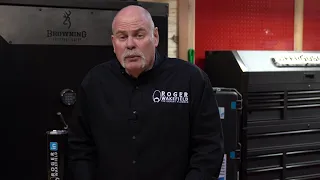When a customer complains about a noisy water heater, it can mean several things. Maybe it’s the popping of mineral deposits. Perhaps the burner is misfiring or the expansion tank is malfunctioning. But there’s more to a service call than just swapping parts. You have to evaluate the heater’s age, overall condition, and whether it’s worth replacing altogether. Even the method of draining it can be an ordeal, especially if it’s crusted with years of sediment.
Below, we’ll walk through a scenario that exemplifies an “in the field” water heater service call. You’ll see how each step—inspecting the heater, draining it (sometimes through frustrating layers of sediment), and swapping it for a new one—fits into a logical sequence. You’ll also learn how to handle logistical details like traffic time and carrying specialized gear to make the job smoother.
Factoring in Travel Time and Efficiency
In busy metro areas, you might spend nearly as much time on the road as you do on the actual repair. If your territory sprawls across multiple cities or counties, traffic jam unpredictability cuts into your day. That means if a job takes one hour on-site, but it’s an additional 30 minutes each way in transit, your crew’s efficiency rate dwindles.
Pricing to Reflect Driving
Some businesses build their pricing models to compensate for these inefficiencies—especially if technicians are crossing multiple zip codes. You pay them during the commute, so each job must factor in that overhead. Others might limit the service area or schedule calls in clusters so one plumber can tackle multiple jobs near each other in a single outing.
No matter how you do it, you must plan for it. Otherwise, you’ll wonder why profits are slim. The worst approach is to pretend the lost hours in a truck don’t exist, leading to undercharging customers relative to the actual labor costs.
Initial Inspection of the Old Heater
Upon arrival at the customer’s house, you do a quick background check on the water heater. A glance at the label might indicate the manufacturing date, the brand, and the warranty. Suppose you see it was made in 2011 and it’s a six-year warranty heater. That means it’s well past the point where any replacement parts would be covered. If the client called because they hear loud popping sounds during heating, the likely culprit is sediment that’s accumulated over time.
Listening for Telltale Noises
When you run the hot water, the heater fires up. If you hear a steady crackle or popping, that’s the layer of hardened mineral scale (calcium and magnesium) on the bottom, trapping water beneath it. As the burner tries to heat through the encrusted layer, it superheats pockets of water, creating steam bubbles that snap and pop. While a mild pop isn’t always catastrophic, severe buildup signals that efficiency has plummeted.
Deciding Between Repair or Replace
If a water heater is only a few years old, you might flush it or replace a part like an anode rod, thermostats, or the burner assembly. But with an 11-year-old tank that’s well beyond warranty, a thorough flush might risk stirring up lumps of sediment that open cracks or damage the heater’s lining. The question is: does the customer want to gamble on a short-term fix? Or is it more economical to invest in a new, more efficient model?
Checking the Plumbing Code and Manufacturer’s Guidelines
In many regions, if you replace the heater, you must update to current safety code: expansion tanks, seismic straps, or venting improvements. Some older heaters also have smaller draft hoods or may require changes in how you route the flue. Being proactive with the client about potential code upgrades ensures no surprises on the final invoice.
The Notorious Drain Down
Draining an 11-year-old heater is often the hardest part of the job. The bottom drain spigot might be packed with sediment, reducing outflow to a trickle. In some cases, you can attach a short hose and attempt to flush bits out. But if the blockage is significant, you might try an external method to blow out water:
-
Induce Air: Use a fitting on the hot-side connection, capping the cold side, then attach compressed air to push water out the drain.
-
Short Hose & Patience: Let gravity do it but frequently coax the valve with slight open-shut motions to clear debris.
-
Pump Out: Some plumbers have utility pumps to remove water from the top or a side connection if the drain is hopelessly clogged.
In our scenario, a compressed-air approach or a thorough hooking of a pump might be needed since the residue can be thick. Once you get enough water out to safely move the heater, you can handle the rest outdoors.
Lifting and Transporting the Old Heater
Moving a partially water-filled tank can strain your back or risk floor damage. If it’s in an attic or second story, you might set up a winch or hoist mechanism. Some crews carry a specialized dolly designed for angled stair descents. Proper body mechanics are crucial. The last thing you need is to tear a muscle or drop the heater, risking property damage.
Safety Gear
-
Gloves: To avoid cuts on the sharp edges under the jacket or the bottom rim.
-
Eye Protection: If you’re messing with pressurized hoses or draining sediment, dirty water might spray upward.
-
Anti-Slip Footwear: Water heater closets can be damp, and corners can be tight.
Installing the New Heater
Once you’ve disposed of the old tank, the real fun starts—fitting the new one. Let’s assume you opted for a same-capacity unit, maybe a 40- or 50-gallon, depending on household needs. The steps:
-
Positioning: Place the new heater in the pan if applicable, aligning it so the T&P relief valve and the drain are accessible.
-
Strapping or Anchoring: If code requires seismic or bracing straps, measure carefully and fasten them.
-
Vent Connections (Gas): For a gas water heater, secure the draft hood to the flue, ensuring a proper upward pitch. Double-check for correct vent sizing.
-
Water Connections: Hook up the hot and cold lines. If you’re reusing flexible connectors, confirm they’re not worn. If you’re re-piping with copper, that could add more time. Alternatively, push-to-connect fittings might speed it up.
Using Push-to-Connect Fittings
When pressed for time, or if you want a job with minimal open-flame torch work, push-to-connect (PTC) fittings can be appealing. Some come with advanced design features and strong internal grabs or sealing rings. They can drastically reduce assembly time:
-
No Soldering: No flux or open flame near flammable surfaces.
-
Easy Adjustments: If you measure slightly off, you can rotate or re-seat the fitting.
-
Speed & Efficiency: Perfect for a water heater swap, especially if your existing copper stubs are in good shape.
However, check local code acceptance for PTC fittings. Most major codes do approve them in many applications, but do your due diligence.
Testing and Firing Up
After everything’s connected, the heater is anchored, and T&P relief valve is in place, it’s time to open the water supply:
-
Fill the Tank: Keep a hot faucet open inside the home to let air escape as the tank fills.
-
Check for Leaks: Inspect around the fittings and any new joints.
-
Gas or Electric Power: For a gas heater, you’ll pilot or ignite the burner assembly, verifying a stable flame. For electric, confirm the power is correct and the elements are functioning.
-
Temperature Setting: Typically 120°F is recommended for safety and energy efficiency. Let the homeowner confirm if they prefer a higher or lower setting.
Debrief with the Customer
Upon finishing, walk through the new installation with the homeowner:
-
Show them the shutoff valve for gas or water, so they know how to react in an emergency.
-
Point out the T&P relief valve and explain how it might drip occasionally when pressure or temperature spikes.
-
Warranty Information: Provide any relevant manufacturer documents and your service warranty details.
Encourage them to do minor annual checks—like feeling for warmth or moisture around the top connections, listening for unusual noises, and clearing away clutter from around the tank.
Reflecting on the Overall Service Call
A call that starts with a “my water heater is making weird noises” can end with a brand-new, code-compliant heater, especially if the old one is beyond its prime. Meanwhile, your approach must be thorough:
-
Evaluate: Age, condition, potential cost of minor repairs vs. new installation.
-
Plan: Check for code compliance issues that might require expansions or updated venting.
-
Execute: Drain effectively (using air or a pump if needed). Safely remove the old tank.
-
Install: Use best practices for hooking up the new model, possibly employing push-to-connect fittings to save time.
-
Validate: Test thoroughly for leaks, proper venting, and consistent heating.
Conclusion
An in-the-field water heater service call can be straightforward or become a marathon session, depending on how well the old unit drains and whether you must handle any code upgrades. Knowing how to pivot—like using compressed air to push out sediment or employing push-to-connect fittings for quick replacements—separates a smooth job from a frustrating one.
When it’s done right, the homeowner gains peace of mind with a reliable hot water supply, and you maintain a reputation as a skilled, efficient installer. For your next water heater call, consider these tips and techniques to make the process as hassle-free as possible.




